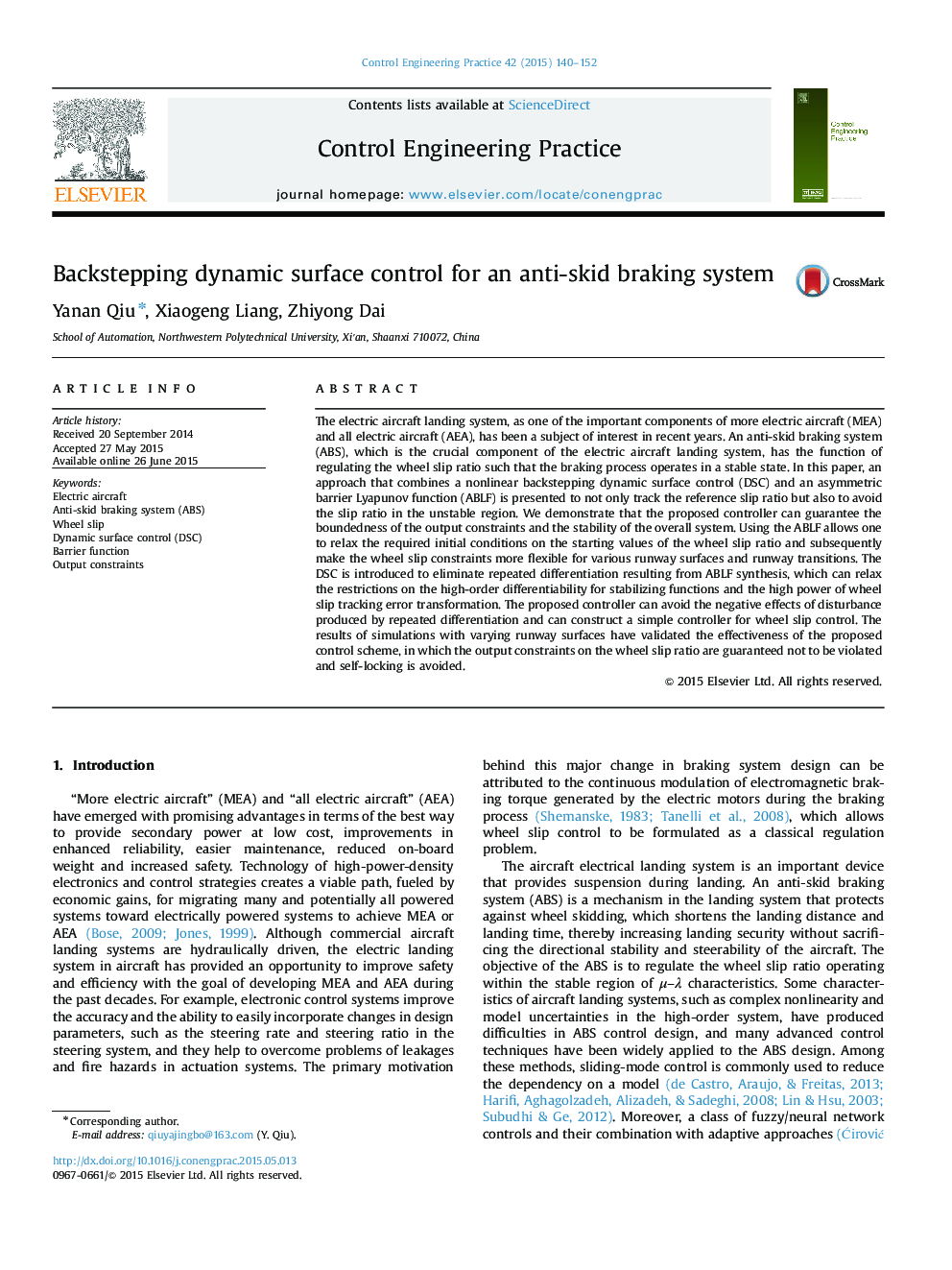| Article ID | Journal | Published Year | Pages | File Type |
|---|---|---|---|---|
| 699007 | Control Engineering Practice | 2015 | 13 Pages |
•A nonlinear backstepping dynamic surface control in conjunction with an asymmetric barrier Lyapunov function is proposed to ensure that the wheel slip ratio operates in a stable region, which consequently prevents the wheels from self-locking.•An asymmetric barrier Lyapunov function is employed to relax the required initial conditions on starting values of wheel slip ratio, furthermore it could provide great flexibility on constraints of wheel slip ratio.•The problem due to repeated differentiation of virtual control functions could be eliminated by employing dynamic surface control into recursive backstepping procedure especially in the multiple-state high order system.•The proposed control scheme has favorable and robust tracking response and steady accuracy with prescribed tracking error, especially in the presence of disturbance and runway sufaces transitions.
The electric aircraft landing system, as one of the important components of more electric aircraft (MEA) and all electric aircraft (AEA), has been a subject of interest in recent years. An anti-skid braking system (ABS), which is the crucial component of the electric aircraft landing system, has the function of regulating the wheel slip ratio such that the braking process operates in a stable state. In this paper, an approach that combines a nonlinear backstepping dynamic surface control (DSC) and an asymmetric barrier Lyapunov function (ABLF) is presented to not only track the reference slip ratio but also to avoid the slip ratio in the unstable region. We demonstrate that the proposed controller can guarantee the boundedness of the output constraints and the stability of the overall system. Using the ABLF allows one to relax the required initial conditions on the starting values of the wheel slip ratio and subsequently make the wheel slip constraints more flexible for various runway surfaces and runway transitions. The DSC is introduced to eliminate repeated differentiation resulting from ABLF synthesis, which can relax the restrictions on the high-order differentiability for stabilizing functions and the high power of wheel slip tracking error transformation. The proposed controller can avoid the negative effects of disturbance produced by repeated differentiation and can construct a simple controller for wheel slip control. The results of simulations with varying runway surfaces have validated the effectiveness of the proposed control scheme, in which the output constraints on the wheel slip ratio are guaranteed not to be violated and self-locking is avoided.
